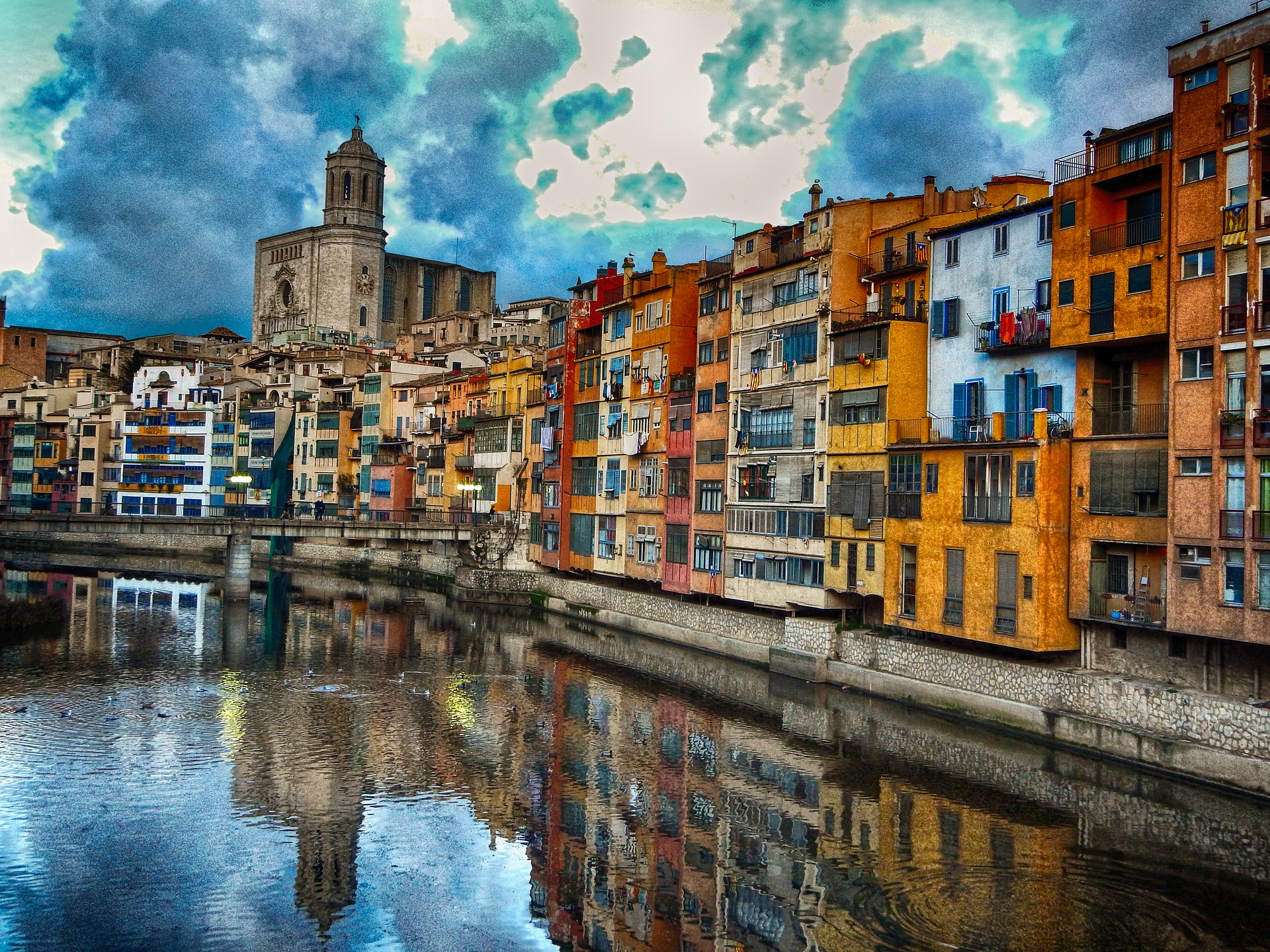Gerona (in Catalan and officially, Girona) is a Spanish city and municipality, capital of the homonymous province and of the Gironés region, in the autonomous community of Catalonia.
Its historic center or Barri Vell is delimited in the east by the so-called Paseo de la Muralla, the walkway of the old Carolingian walls (9th century) and the late Middle Ages (14th and 15th centuries). Its monuments include the Call, an old Jewish quarter, one of the best preserved in Spain; as well as the colorful Casas del Oñar, built on the banks of the river and very close to the cathedral, with the widest nave in the world in Gothic style.
The history of the city goes back to the settlements of the Iberians of the indigete tribe in the towns that surround and close the Llano de Gerona. Around 77 a. C. Pompey built an oppidum on the Via Heráclea and the Roman occupants founded the original Gerona, called Gerunda in Latin. The new city of Gerunda was repopulated with the inhabitants of the town of San Julián de Ramis, becoming an important center of the region, with the articulation of a Roman ager that surrounded the city. Although Gerunda was inland, away from the coast, it had a good connection with the port of Ampurias.
The city had its first period of splendor as a diocese of the Church attached to the metropolitan see of Tarragona, followed by the ruralization that was unleashed throughout the ancient Roman Empire, due to the general ruin and loss of weight of the citizens. It belonged to the Crown of Aragon like many other territories.
In 2016, the city was awarded the Europe Prize, a distinction awarded annually by the Council of Europe, since 1955, to those municipalities that have made notable efforts to promote the ideal of European unity. It was the second Spanish city to obtain the award, after Santiago de Compostela.


Leave A Comment